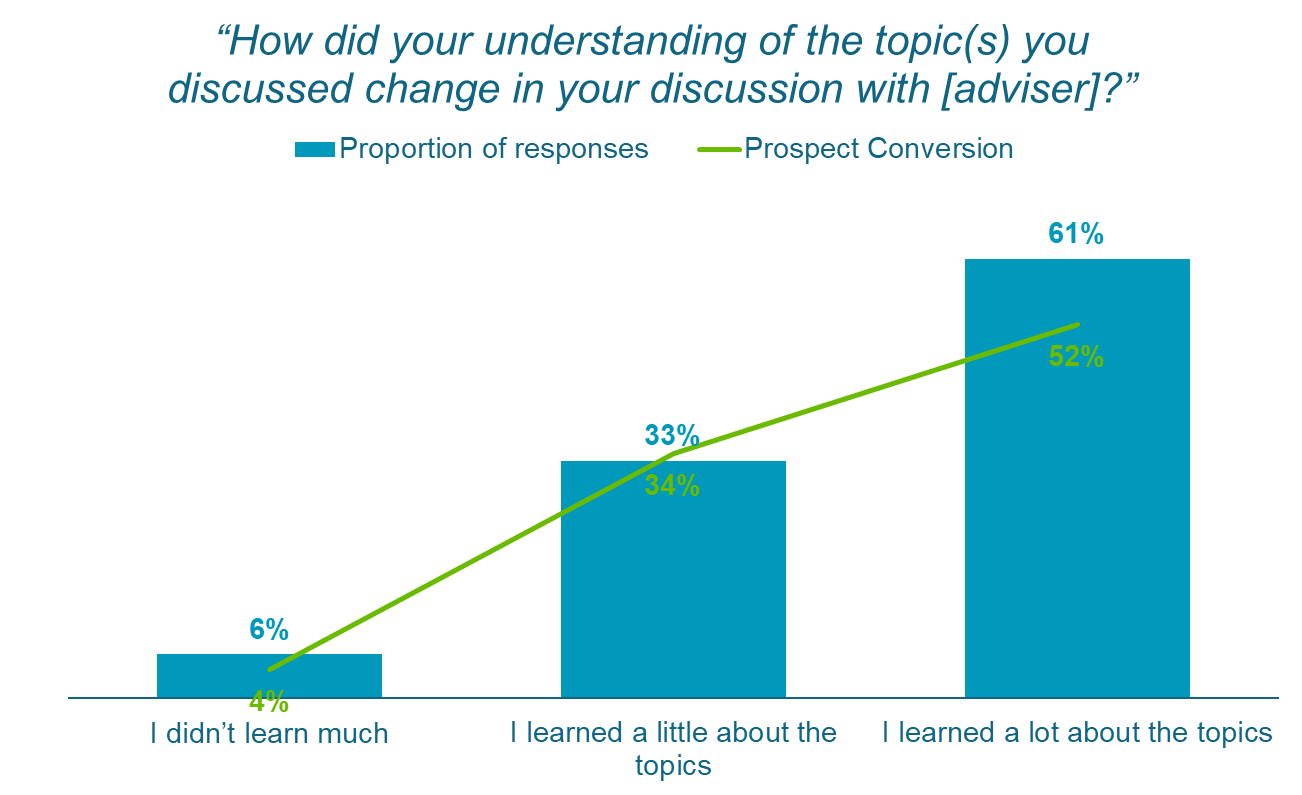Prospective Client Learnt A Lot
Prospective Client Learnt A Lot is a Driver of Elevation Goal 1: Making great first impressions, increasing conversion
Data based on responses to the following question, asked in the First Impression review form
“How did your understanding of the topic(s) you discussed change in your discussion with [adviser]?”
Possible responses
I didn’t learn much
I learned a little about the topics
I learned a lot about the topics
Prospective Client Learnt A Lot Score
Proportion of respondents answering “I learned a lot about the topics”
Relationship between Prospective Client Learnt A Lot and Conversion Rate
The relationship between Prospective Client Learnt a Lot and Conversion Rate is highly statistically significant
Our research with firm management teams, advisers and clients indicated that an adviser evidencing their expertise, and providing value in the first session can help to drive conversion rate. We capture both of these factors through this driver.
We confirmed this relationship quantitatively through our review forms.
How to improve your score:
Simplify your explanations
Layman’s Terms. The ability to take a complicated concept and simplify it down is incredibly valuable. The simpler the explanation, the easier it will be for your client to understand. Give some thought in advance to more complex concepts, and spend time practising your explanations for them with family & friends.
Soundbites. Try to put key information across in soundbites. Soundbites are short pieces of information which are both interesting and memorable. For example:
- “the more risk you take, the higher your potential reward”
- “time in the markets, not timing the markets”.
Make it relatable
Paint a picture. Use relatable analogies for your client that will conjure up an image in your client’s mind. Make it relevant to them.
- For example, when explaining protection, liken it to taking an umbrella if you go out walking for the day. Hopefully it won’t rain, but if it does, you’ll be glad you brought it.
- For a client who likes football, you could say that they are the club owner – they know what they want. You are like the team manager, setting the strategy to achieve their goals and you call in specialists as players, like the fund manager as the striker and your compliance team as defence.
Validate understanding
Test your client’s understanding. Regularly asking a client questions on the subject you’ve just discussed. Ensure you do this from the start of each meeting; that way your client will think more tests will be coming so will really listen and therefore retain more information.
Explain back. Have your client’s explain complex topics back to you to confirm they have fully understood.
Financial planning has many complexities, but most of the concepts are simple. If you consciously keep your explanations simple, paint mental pictures with analogies and test your client’s understanding as you go, your clients will feel that they learned a lot from their time with you. Consumer understanding is a key outcome as set out in the consumer duty regulation, as such more time educating your clients, will result in more educated clients.

